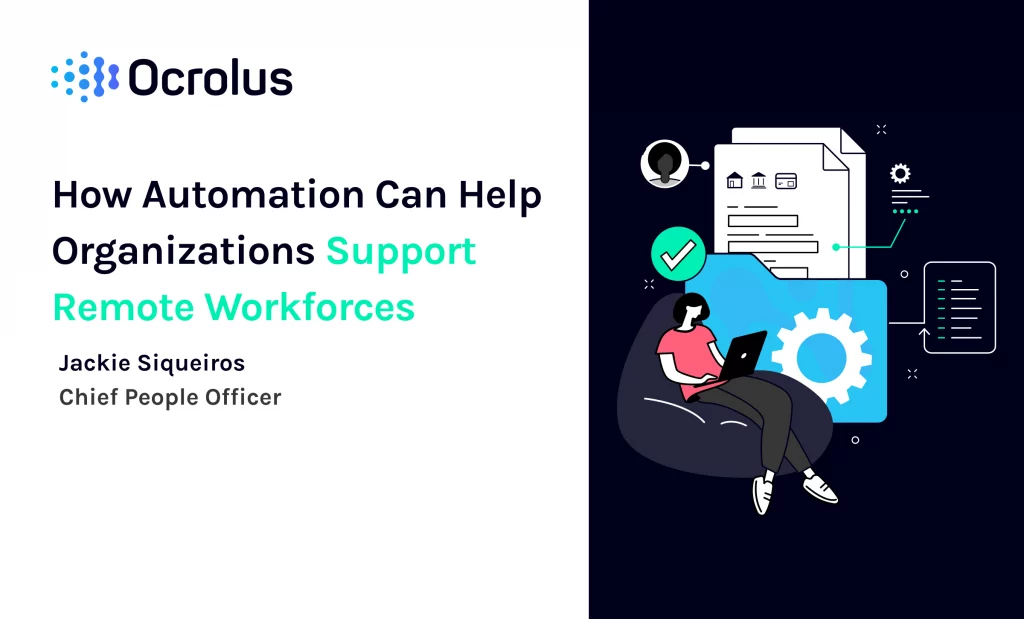This website uses cookies so that we can provide you with the best user experience possible. Cookie information is stored in your browser and performs functions such as recognising you when you return to our website and helping our team to understand which sections of the website you find most interesting and useful.
How Automation Can Help Organizations Support Remote Workforces

Financial services companies are dealing with the impact of the clear and permanent shift to a hybrid workforce model. The changes have actually been a long time coming, and so the tools to support these new models are more mature than many realize.
Pre-pandemic, financial services were already pioneers in hybrid environments. According to Owl Labs survey data, financial services was the #3 leading industry to embrace hybrid work, behind only healthcare and high tech. And PwC’s 2019 Remote Work Survey showed that more than one-quarter of financial services companies let the majority of their workforce work remotely at least once per week. That pattern became the norm during the peak of the pandemic response, and today the handful of banks demanding a full in-office return-to-work are the exception, not the rule.
What this means for lending operations of all shapes and sizes is an increased need for automation in the workplace—and a recognition that the concept of the workplace will continue to stretch far and wide. Lenders still adjusting to a fluid workforce can ease the ongoing transition with workflow automation. For many leaders in an industry accustomed to on-premise concepts of collaboration, making a long-term change to the hybrid work model takes a greater understanding of digital collaboration options available today.
How automation overcomes reliance on paper
Paper-bound processes have long posed challenges for a hybrid or remote workforce. Even an entirely on-premise workforce can struggle with confusion and inefficiencies: when a task is tied to a single document, that document has to be moved for the process to advance. If printed copies are made, those copies can get out of sync as different employees make changes or take action.
Digital collaboration organizes all workers, on-premise and remote, around a consistent and centrally managed version of the truth. Contributors don’t have to manually scan or fax documents back and forth to catch up on changes: the workflow automatically shows them the latest and greatest edition of a document or packet. Digital document-driven workflows can eliminate the need for additional paper to be created at intermediate and concluding stages of a deal, reducing resource usage and the need for long-term physical storage.
How automation improves accuracy
For many businesses, accuracy is important, however, for financial services, it is paramount, as is the need to minimize errors. By moving paper-bound processes to automated ones, organizations can help a workforce eliminate several sources of risk and error (and the accompanying delays and inefficiencies) creating more accurate workflows.
- Data can be automatically classified and structured as it is scanned, making documents searchable as well as rich sources of data for later analysis.
- Data entry errors from manual keying are significantly reduced.
- Workflow automation can apply several tests to flag applications or transactions for potential fraud.
These safeguards and efficiencies help contributors avoid confusion and complication which can lead to slower service and both employee and borrower frustration.
How digital collaboration improves transparency and lowers barriers
With a single, consistent view of all documents and document-triggered processes, employees have more opportunities than ever to band together around that single source of the truth. Workers also gain more trustworthy insights into the documents they’re processing, making them better equipped to do their jobs.
And when documents are shared and managed digitally, the chain of custody is always transparent. Changes and additions can always be traced back to each contributor. Responsibility for the next document-triggered task can also be managed and monitored through workflow tools. These insights also help managers understand the true contributions of each employee.
Automation is already a proven and trusted technology for financial services providers. Today, lenders process millions of loan documents monthly through Ocrolus workflow automation tools, extending the reach and productivity of their talented employees.
Schedule a free demo and learn how our automation can improve your lending operations.






